The Hanoi Old Quarter, with its labyrinthine streets and colonial architecture, offers a glimpse into the city’s rich heritage. Brimming with history and culture, its markets stand as a testament to the everyday life of its bustling populace. Whether it’s the early morning buzz of vendors setting up shop or the scent of sizzling street food wafting through the air, each market brings with it a unique experience. As the city’s economic pulse, these markets combine sensory delights, economic drama, and a cultural mosaic that beckons both locals and tourists.
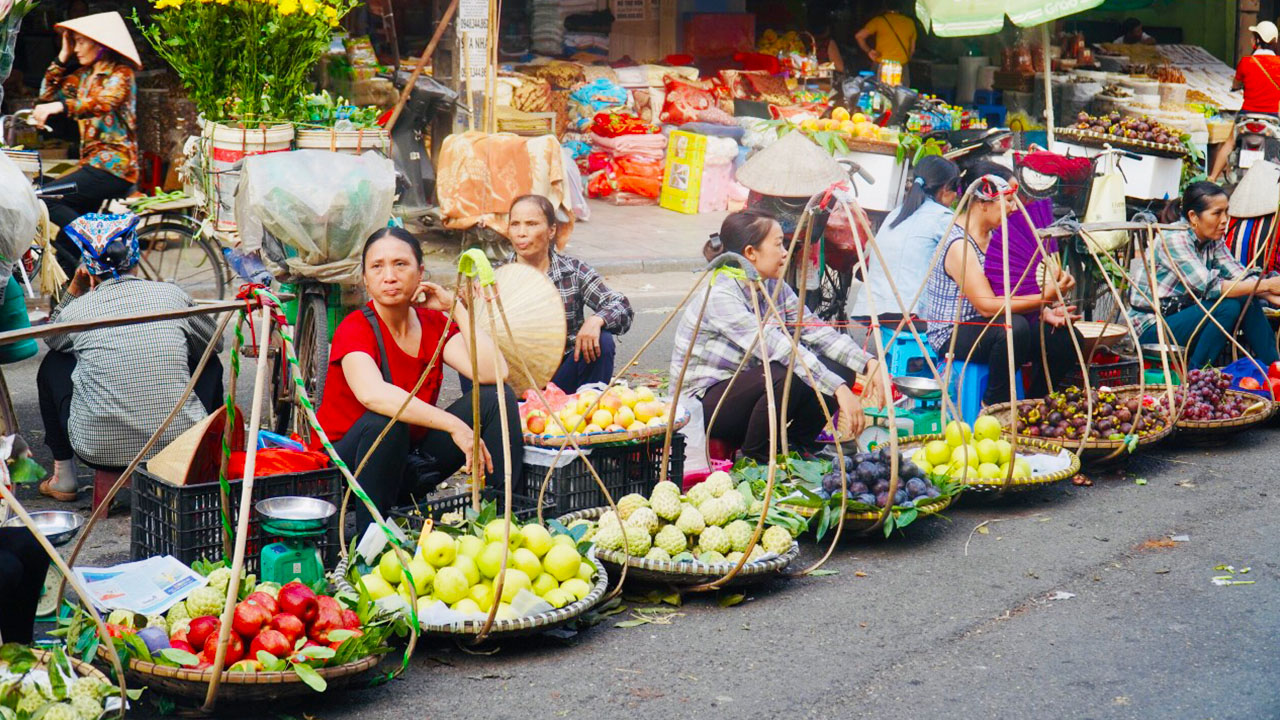
https://krhnashik.com/ecg/ Markets in Hanoi Old Quarter are more than just trading hubs; they are cultural landmarks. Unlike the sterile, meticulously organized shopping malls, these markets embody the soul of traditional Vietnamese commerce. They boast an impressive array of products, from fresh produce and exotic spices to intricate handicrafts and modern electronics. As you wander through these vibrant lanes, you’ll notice the contrast between the old and new Hanoi converging seamlessly, creating an intriguing juxtaposition of tradition and modernity.
Visiting these markets is akin to stepping into a microcosm of Hanoi itself. Imagine the bustling crowds negotiating prices amidst the cacophony of vendors advertising their goods. You’ll find a cultural experience woven into the very fabric of these markets. From the Dong Xuan Market the largest market in Hanoi to the quaint Hang Be Market known for its local specialties, the Old Quarter’s markets offer something for everyone. And let’s not forget the Hanoi Weekend Night Market, which comes alive under the twinkling fairy lights, providing a perfect end to a day of exploration.
Whether you are hunting for a bargain, yearning for an authentic culinary experience, or simply soaking in the atmosphere, the markets of the Hanoi Old Quarter provide a unique narrative of the city’s social and economic history. They offer not just goods, but stories stories of the vendors who have been plying their trade for generations, and stories of modernity creeping into the traditional lanes. In this article, we will explore some of the must-visit markets in this iconic quarter, delving into their histories, products, and what makes each one a gem in Hanoi’s vibrant tapestry.
https://www.pslra.org/about-labradors/labrador-health/ Dong Xuan Market
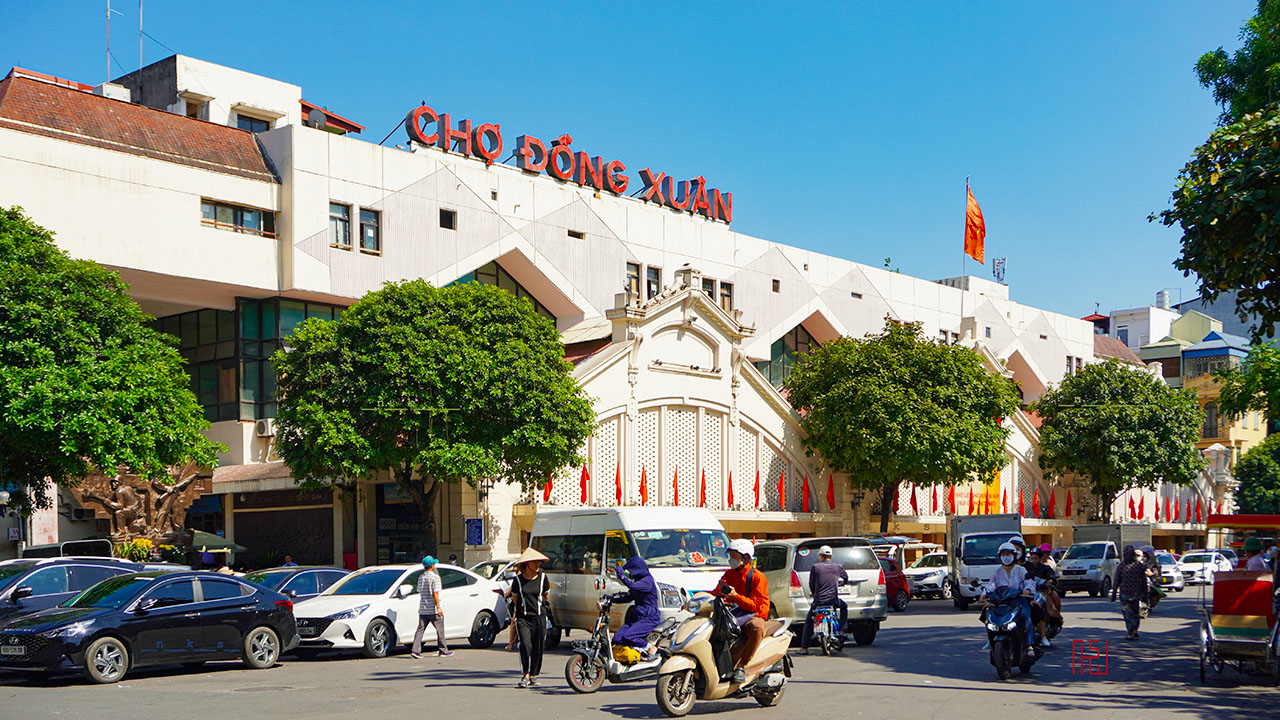
Dong Xuan Market, the largest and one of the oldest markets in Hanoi, is an indispensable chapter in the story of the city’s commercial life. Established in 1889, it has witnessed Hanoi’s transformation over the decades. Situated in the heart of the Old Quarter, its impressive facade and sprawling interiors tell tales of the city’s past and its enduring spirit.
Despite its modern renovations and expansions, Dong Xuan Market retains its traditional role as the economic heart of the Old Quarter. Locals flock here for their daily needs, and tourists are drawn to its eclectic mix of sights, sounds, and smells. The market is an enclosed structure, which is a contrast to the open-air markets found elsewhere, providing a different kind of shopping ambiance. Here, visitors can escape the heat and hustle of the streets, entering a labyrinth of stalls offering a vast range of products.
Dong Xuan Market’s layout is well-organized, with different sections dedicated to specific types of goods. The ground floor greets visitors with a vivid display of fresh produce and local foodstuffs, while the upper floors house a variety of textile and garment stalls. This structured layout makes it easier for shoppers to find what they’re looking for, avoiding the chaotic maze-like experience of other traditional markets. With such a comprehensive offering, it’s no wonder that Dong Xuan becomes a go-to destination for both locals and tourists.
Despite being a bustling commercial center, Dong Xuan Market is more than just a place to shop it’s a window into Vietnamese culture. The market’s vendors are known for their hospitality and willingness to engage in light-hearted banter. It’s not just about the transactions; it’s about the relationships built over years of trading. Such interactions add a layer of richness to the experience, making each visit unique.
Buy Ambien Online Without A Prescription Products offered
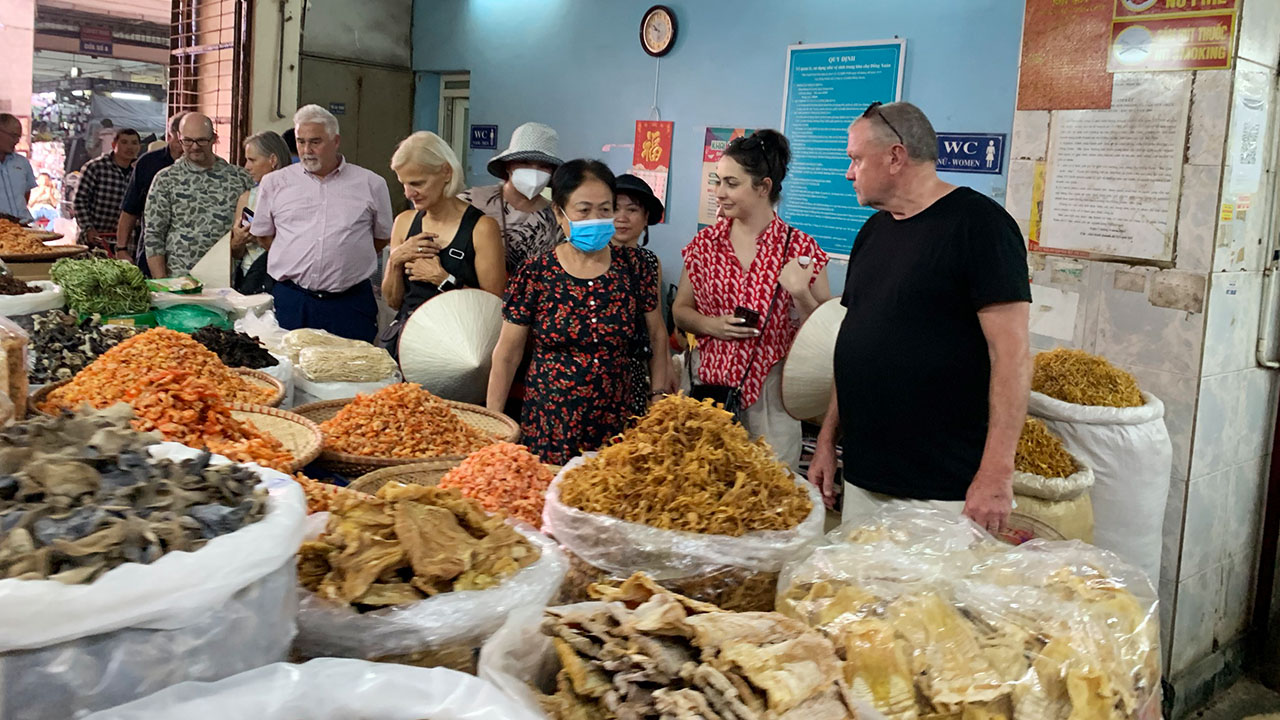
Dong Xuan Market is renowned for its diverse range of goods, meticulously categorized across different sections. As you step into the market, the ground floor is a sensory overload of fresh produce. Here, vendors display an array of seafood, meats, and vibrant, farm-fresh vegetables. The hustle and bustle signify the early morning peak hours when restaurant owners and locals gather their daily essentials. Contrasting this hub of activity is the upper floors, where the atmosphere transitions to a more tranquil shopping experience.
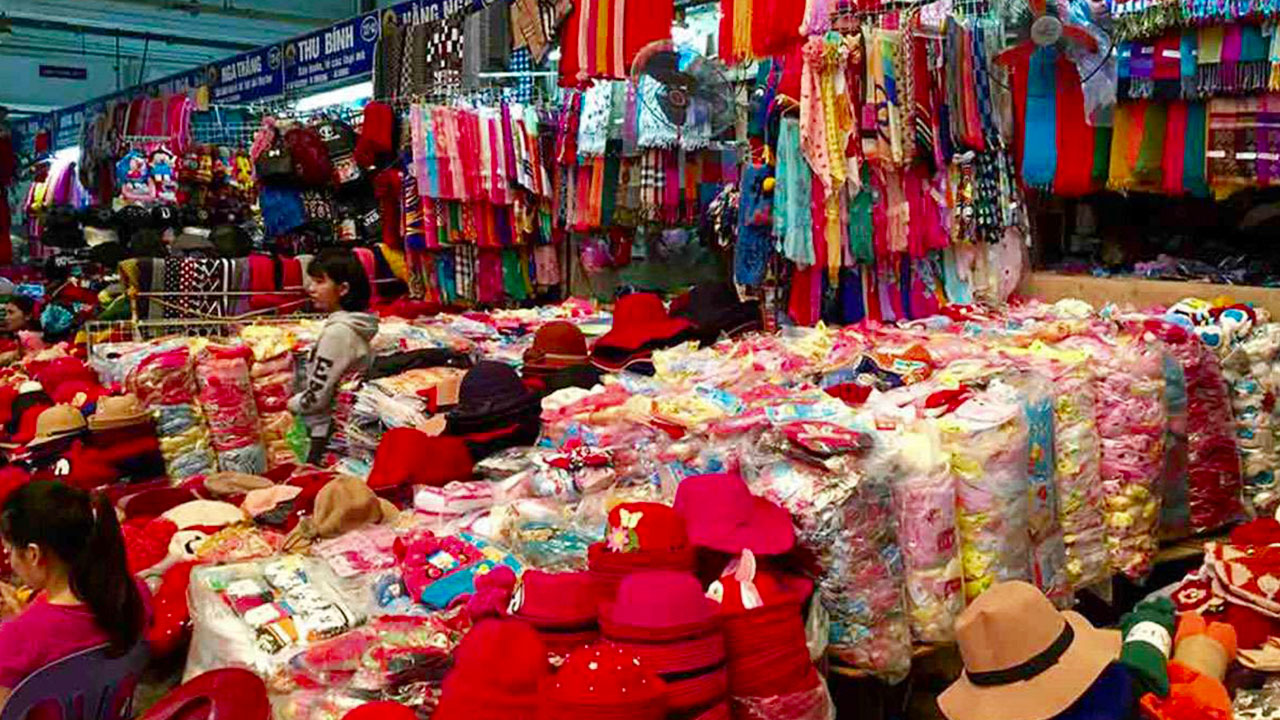
The upper levels of Dong Xuan Market are a treasure trove for textile enthusiasts. Rows of stalls offer an impressive assortment of clothing, from contemporary fashion to traditional Vietnamese attire such as Ao Dai. Wholesale prices make it a popular haunt for locals and tourists looking for bargains. Among the racks of clothing, you’ll find school uniforms, an essential purchase for local families, alongside trendy bags and accessories.

But it’s not just modern fashion that draws the crowd. Dong Xuan Market is a haven for those seeking traditional Vietnamese handicrafts. The surrounding shops are a feast for the eyes, showcasing a variety of Dong Ho paintings, renowned for their intricate designs and vibrant colors. Bat Trang ceramics, known for their exquisite craftsmanship, and Binh Da embroideries add further depth to the market’s offerings. These items not only make for unique souvenirs but also provide insight into Vietnam’s rich artisanal heritage.
For visitors interested in electronic and household appliances, Dong Xuan Market does not disappoint. Whether it’s kitchen gadgets, mobile accessories, or household detergents, the market offers it all at competitive prices. This wide range of products ensures that the market caters to a broad spectrum of needs, making it a one-stop shop for almost anything you might be looking for. As you navigate through the varied sections, it’s easy to become engrossed in the sheer variety and the cultural tapestry they represent.
Opening hours
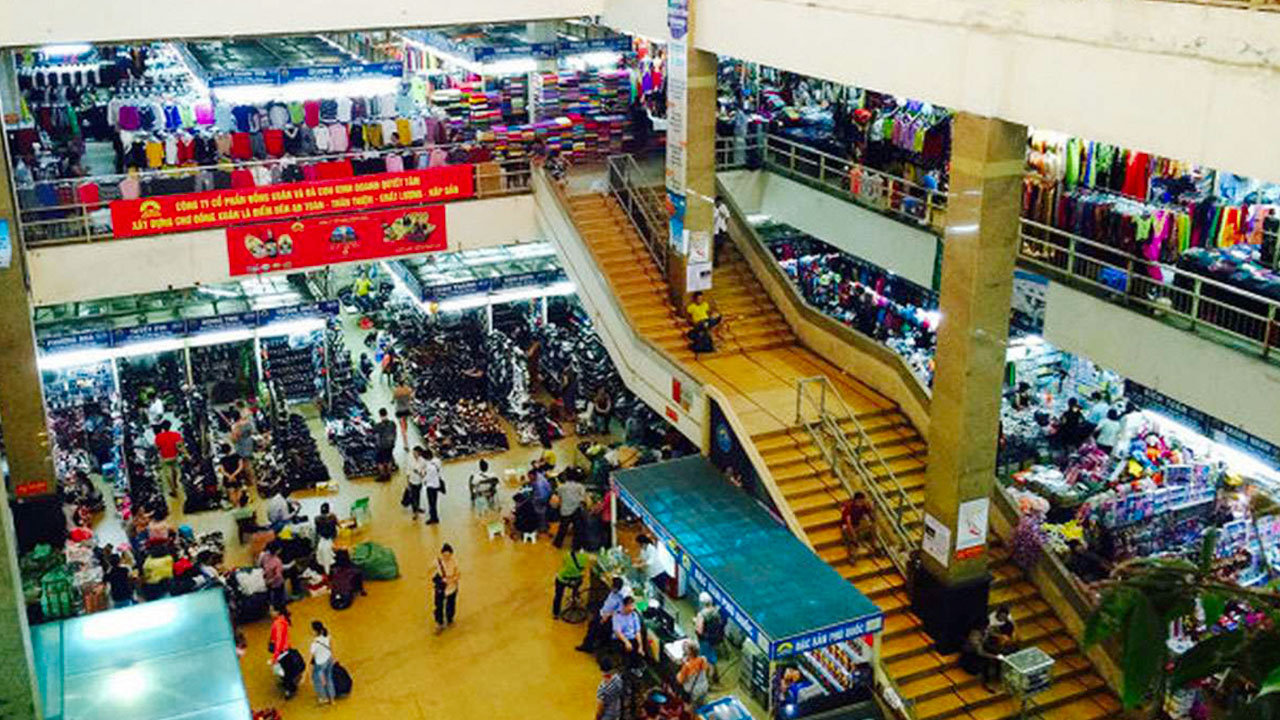
Dong Xuan Market operates daily from https://rulechangers.org/?page_id=2451 6:00 AM to 7:00 PM, with some vendors getting a head start as early as Ambien Online Without Prescription 4:00 AM to attract early risers. This is particularly true for the stalls selling fresh produce, fish, and meats, as early mornings are prime time for trading. The bustling sounds of vendors setting up their stalls and the first influx of morning shoppers give the market a lively and energetic vibe right from the crack of dawn.
By mid-morning, the market reaches its peak, crowded with locals completing their daily shopping and tourists exploring the myriad offerings. The afternoon slows down slightly but remains a busy period, especially around meal times when people come to grab a quick bite or carry home Vietnamese specialties. Talented street food vendors often draw substantial crowds, making it a bustling culinary epicenter within the larger market framework.
Dong Xuan Market also features a Night Market that operates from Buy Ambien Online 7:00 PM to 12:30 AM every Friday, Saturday, and Sunday. During these evening hours, the focus shifts slightly as the market transforms into a more tourist-centric venue. The twinkling lights and cooler temperatures provide a different ambiance, making it an ideal end to a day of exploration. The night market features additional stalls offering souvenirs and snacks, providing a unique blend of shopping and entertainment.
Understanding the market’s hours is crucial for maximizing the experience. To catch the freshest produce and see the market in its full glory, visiting early in the morning is advisable. However, for tourists looking for a more relaxed and atmospheric experience, the evening hours offer a different kind of charm. In essence, Dong Xuan Market accommodates various schedules and preferences, each timeframe offering a distinctive slice of Vietnamese life.
https://www.advoptic.com/product/advamox/ Location and accessibility
Dong Xuan Market is strategically located in the heart of Hanoi’s Old Quarter, specifically at Dong Xuan Street. This central location makes it highly accessible from various parts of the city. For first-time visitors, getting there is reasonably straightforward. From the bustling junction of Hang Bo and Hang Bac, simply head up Hang Ngang Street and continue straight until you reach the vibrant market area.
The market is bordered by four prominent streets: Nguyen Thien Thuat, Cao Thang, Hang Khoai, and Tran Nhat Duat. This prime location, surrounded by a mesh of narrow, interconnected streets, provides multiple entry and exit points, making the market easily navigable. Furthermore, its proximity to other attractions in the Old Quarter makes it a must-visit for anyone exploring the area.
For tourists staying near Hoan Kiem Lake, another beloved site in Hanoi’s Old Quarter, the market is a mere 400 meters away approximately a 20-minute leisurely stroll. This makes it exceptionally convenient for those looking to combine sightseeing with a shopping expedition. Walking through the Old Quarter to reach Dong Xuan Market offers its charms, allowing visitors to soak in the atmospheric streets, quaint shops, and colonial architecture along the way.
Accessibility extends beyond mere walking routes. The market is well-served by various modes of transportation. Whether you choose to hail a taxi, use a Grab (the local ride-hailing service), or rent a motorbike, reaching Dong Xuan Market is hassle-free. The relatively short distances and well-connected roads ensure a smooth journey, enhancing the overall experience of visiting this iconic trading hub.
Hang Da Market
https://advychemical.com/commitments/ Hang Da Market is another gem in Hanoi’s Old Quarter, standing as a testament to the city’s evolving commercial landscape. Originally famous for its leather goods, Hang Da Market has undergone extensive transformation and revitalization, transitioning from its specialized roots to a multifaceted shopping destination. Nestled in the bustling heart of the Old Quarter, it offers a more intimate yet varied shopping experience compared to the grandeur of Dong Xuan Market.
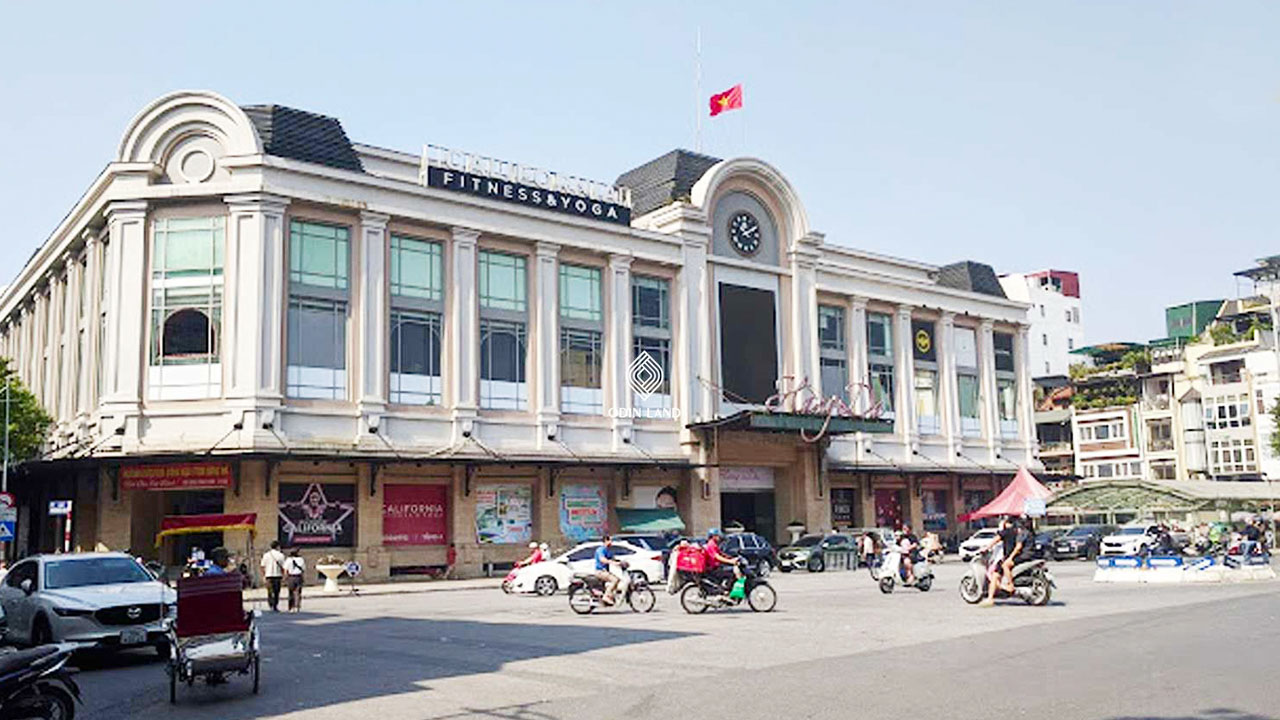
The market’s architecture is one of its standout features. Its white, multi-perforated facade brings a touch of modernity to its historic surroundings, creating a harmonious blend of past and present. The design is not just aesthetically pleasing but also functional, offering ample natural light and ventilation, thus making the shopping experience more comfortable and inviting. The market’s layout is compact yet comprehensive, making it easier to navigate even for first-time visitors.
Unlike the sprawling expanse of Dong Xuan Market, Hang Da Market has a more condensed but equally diverse range of offerings spread across different floors. This market offers a more curated experience, allowing shoppers to explore without feeling overwhelmed. Each floor has its specialty, whether it’s fresh produce, fashion, or local handicrafts, ensuring that every visit is a treasure hunt of sorts.
Hang Da Market exudes a unique character that has evolved over decades of adaptation and change. It serves as a microcosm of Hanoi’s ability to blend tradition and modernity seamlessly. The market stands as a symbol of Hanoi’s adaptability, reflecting how the city has maintained its cultural heritage while embracing contemporary influences. For anyone looking to understand the essence of Hanoi, a visit to Hang Da Market offers invaluable insights into its commercial and cultural dynamism.
Products offered
Hang Da Market is a cornucopia of diverse products, each section brimming with unique offerings that cater to both locals and tourists. Starting from the basement, you’ll encounter a bustling area dedicated to fresh produce. Vendors here proudly display an impressive array of fruits, vegetables, and herbs, each item freshly picked and meticulously arranged. The sight of vibrant, colorful fruits coupled with the earthy aroma of herbs creates an immersive sensory experience that sets the tone for what the market has in store.
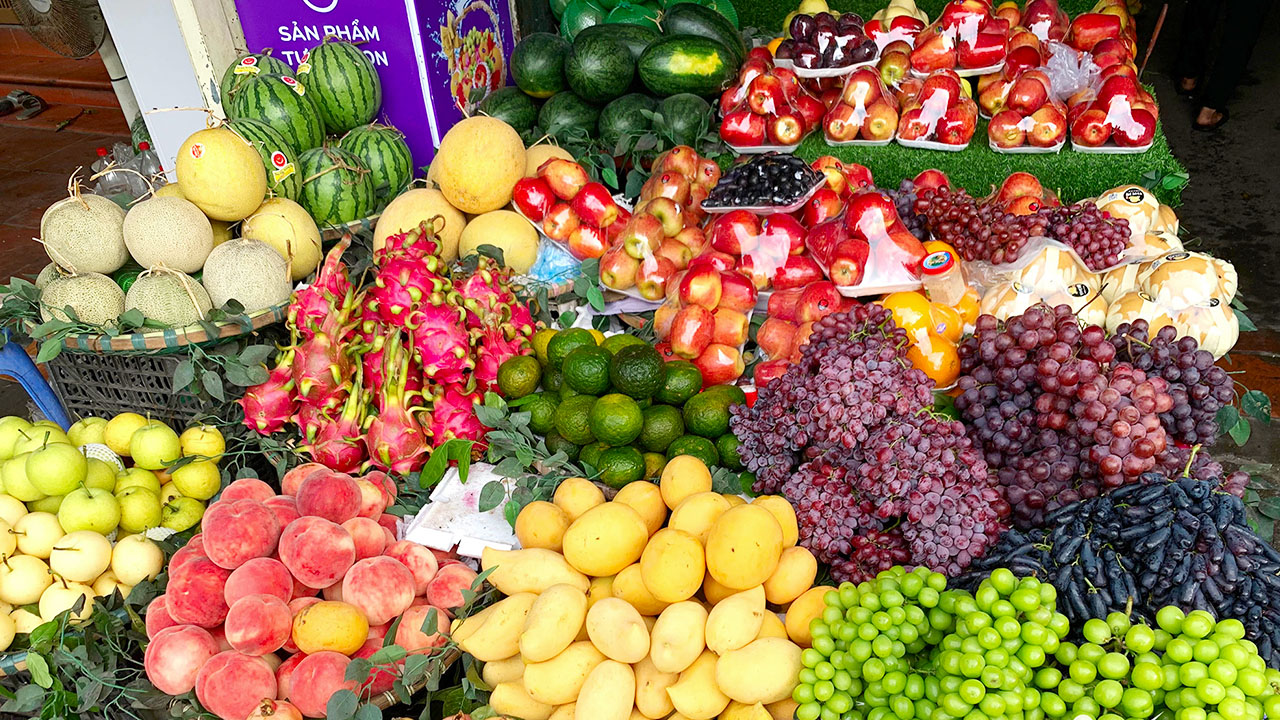
Adjacent to the produce section is the meat and seafood area, a cornucopia of fresh delights. These sections are particularly popular among locals for their quality and variety. From juicy cuts of pork and beef to freshly caught fish and crustaceans, the selection is almost overwhelming. The presentation is meticulous, with each vendor taking great pride in showcasing their goods, ensuring that customers only receive the best.
Moving to the spices and herbs section, the market takes you on a culinary journey through Vietnamese cuisine. Stalls overflow with a rich tapestry of spices, each contributing to the country’s famed culinary diversity. Star anise, lemongrass, and cinnamon sticks fill the air with their tantalizing aromas. Here, shoppers can pick up everything from common cooking spices to rare, indigenous herbs that add a unique Vietnamese flair to any dish.
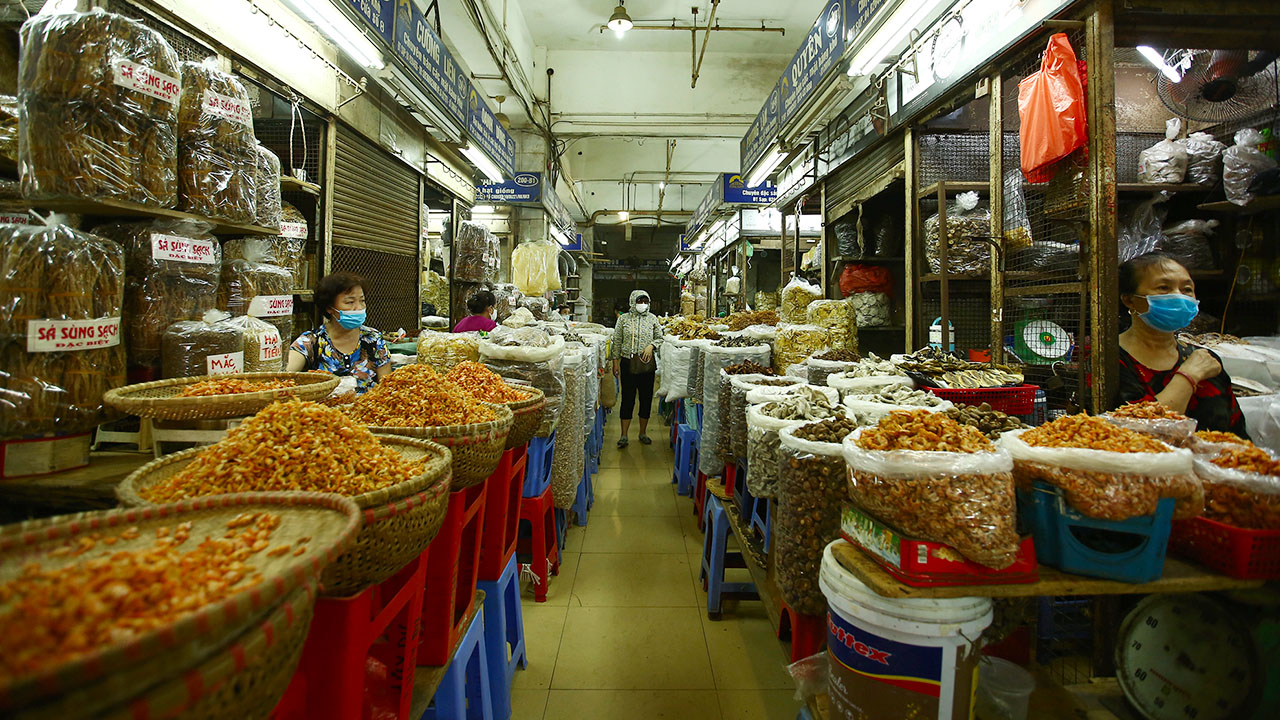
Not to be outdone, the dried goods section adds another layer to Hang Da Market’s diverse offerings. Staple items such as dried beef, fish, and an assortment of preserved foods are prominently displayed. These items are often used to add depth and complexity to Vietnamese dishes, making them a must-have for any local kitchen. The quality and authenticity of these goods make them highly sought-after, both as daily essentials and as gifts to take back home.
Beyond food, Hang Da Market boasts an extensive range of fashion, accessories, and handicrafts. The clothing section features an eclectic mix of modern apparel and traditional attire. Local designers share space with international trends, offering something for everyone. Handicrafts and souvenirs, including items like intricately designed ceramics, traditional puppetry, and embroidered textiles, add to the market’s charm, making it a one-stop-shop for a wide range of desires and needs.
Opening hours
The Hang Da Market operates with a schedule designed to cater to the needs of both locals and tourists. Generally, the market is open daily from https://south-arch.com/contact 6:00 AM to 7:00 PM, with a slight deviation in stall operation times. Unlike Dong Xuan Market, Hang Da Market officially opens its doors at 8:00 AM, ensuring that most vendors are ready for business by the time visitors arrive.
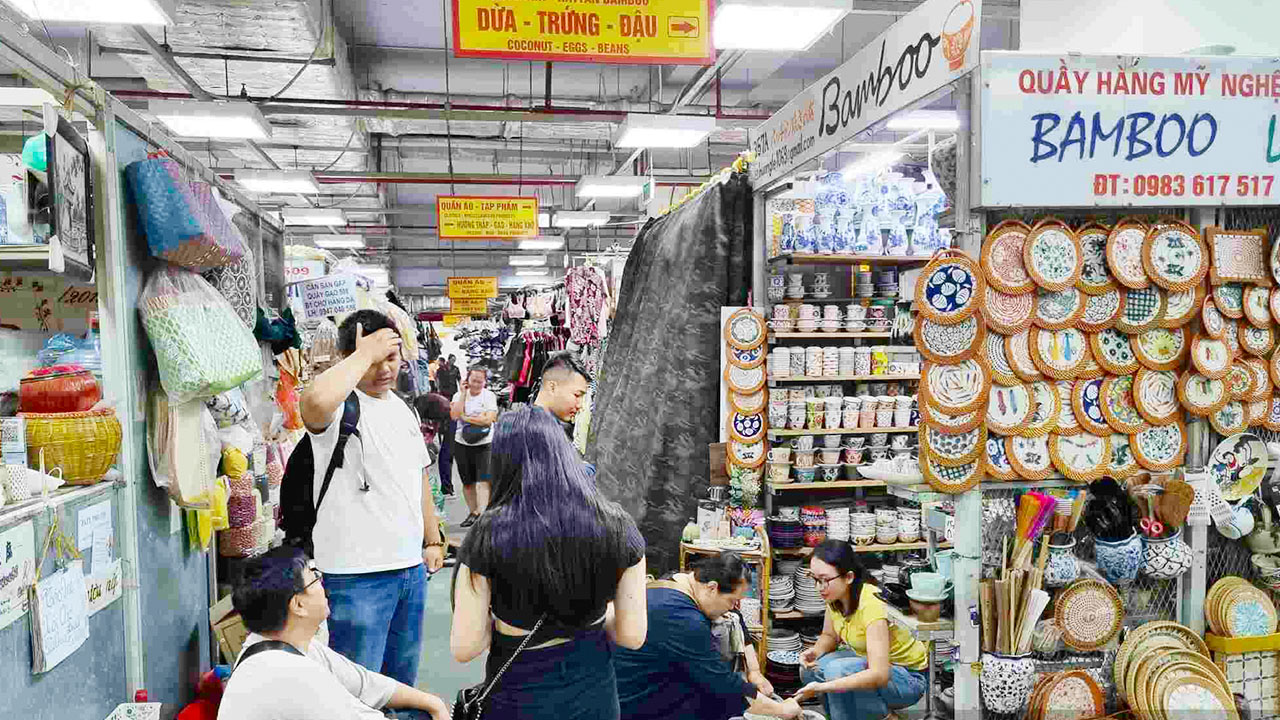
A walk through the market in the early hours reveals the initial set-up phase, a quiet yet industrious time when vendors arrange their fresh produce, meats, seafood, and other items with meticulous care. By mid-morning, the market starts buzzing with activity. At this time, it becomes the perfect window for visiting not only because of the abundance of fresh products but also due to the manageable crowd size. Peak hours occur around noon as locals and tourists flock to the market for a quick lunch or to purchase necessities.
It’s worth noting that while the market officially closes its doors by 7:00 PM, some vendors might start wrapping up their operations a bit earlier, particularly those selling fresh produce and perishables. On the other hand, shops dealing in non-perishable items like clothing and handicrafts may stay open till the very last minute in order to accommodate latecomers.
For those planning a visit, aiming to explore the market between 9:00 AM and 5:00 PM is generally ideal. This timeframe ensures that all stalls are fully operational, providing a comprehensive shopping experience. Whether you’re there to purchase groceries, indulge in culinary delights, or hunt for unique souvenirs, the carefully organized hours ensure that you have ample time to explore Hang Da Market’s many offerings.
https://centexseniorcare.com/medicare-part-d-prescriptions-plans/ Historical significance
The historical significance of Hang Da Market is deeply rooted in its origins and transformation over the years. Originally, the market was known primarily for its leather goods, earning a reputation as the go-to place for high-quality leather products. However, as Hanoi evolved, so did Hang Da Market, shedding its leather-centric label and embracing a more varied range of offerings. This transition reflects not only the market’s adaptability but also Hanoi’s ability to balance its cultural heritage with modern growth.
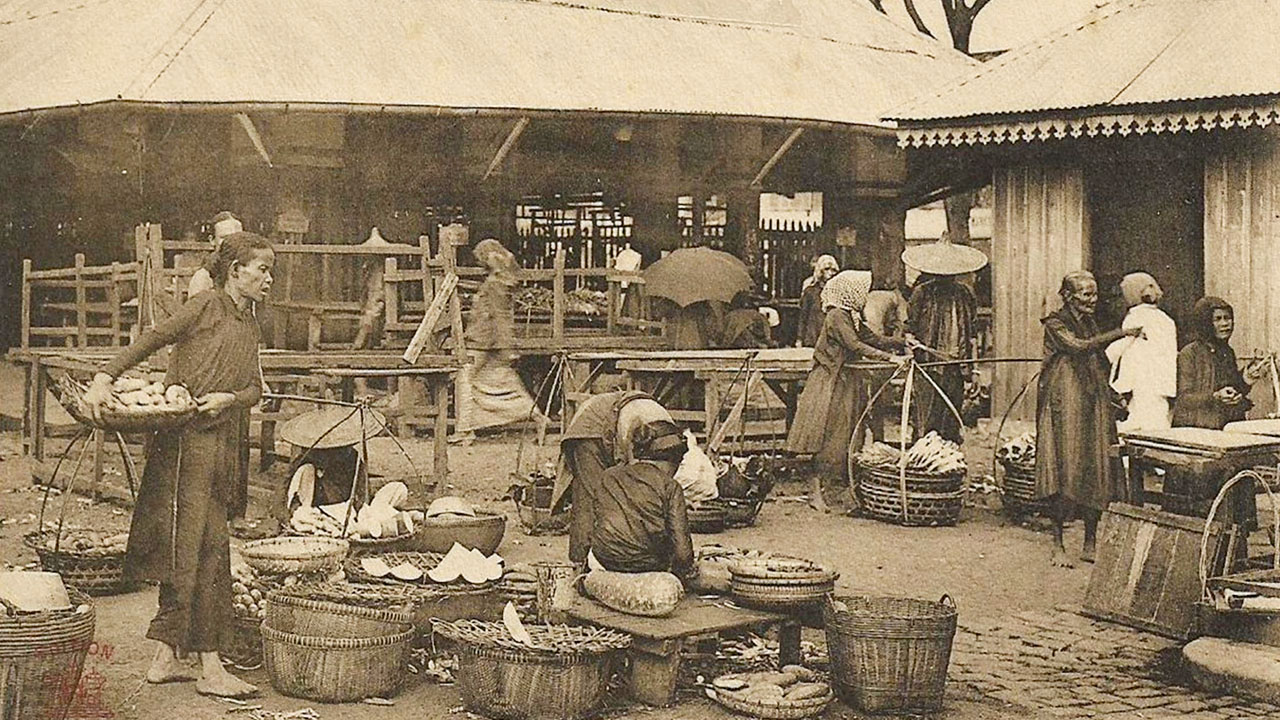
Hang Da Market’s journey from being a specialized leather trading hub to a vibrant, multi-faceted shopping destination encapsulates Hanoi’s ability to evolve while preserving its essence. This transformation didn’t happen overnight but was the result of decades of adaptation, responding to the changing demands and lifestyles of Hanoi’s residents and its increasing influx of tourists. The market’s diverse range of products today symbolizes the successful blending of tradition and modernity, making it a living example of how Hanoi sustains its cultural roots while embracing contemporary influences.
In the context of historical significance, Hang Da Market stands as a monument to the resilience and dynamism of Hanoi’s commercial culture. Despite the rapid modernization and urban development around it, the market has retained much of its traditional charm. The market’s vendors, many of whom have operated stalls for generations, contribute to its enduring appeal. Their stories of perseverance and adaptation add a personal touch to the market’s historical narrative, making it more than just a commercial venue but a repository of communal and familial histories.
For those interested in the social and economic history of Hanoi, Hang Da Market offers invaluable insights. Its evolution is a microcosm of the broader changes that have swept through Hanoi and Vietnam at large. From colonial times to the modern-day, the market has not just survived but thrived, transforming to meet new needs while holding on to the essence of what makes it uniquely Hanoian. In this way, a visit to Hang Da Market is also a walk through history, offering a tangible connection to Hanoi’s rich and dynamic past.
Buy Tramadol Online Overnight Delivery Hanoi Weekend Night Market
The Zolpidem Tartrate Price Hanoi Weekend Night Market, stretching from https://www.pvgov.com/flasher-barricade-association/ Hang Ngang to Hang Duong Street, is a bustling spectacle that encapsulates the vibrant spirit of Hanoi. Operating every Friday, Saturday, and Sunday from Tramadol Prices 6:00 PM to 11:00 PM, this market is a must-see for anyone visiting Hanoi. Unlike the traditional daytime markets, the night market offers a different ambiance altogether, illuminated by twinkling lights and the palpable energy of the crowds.
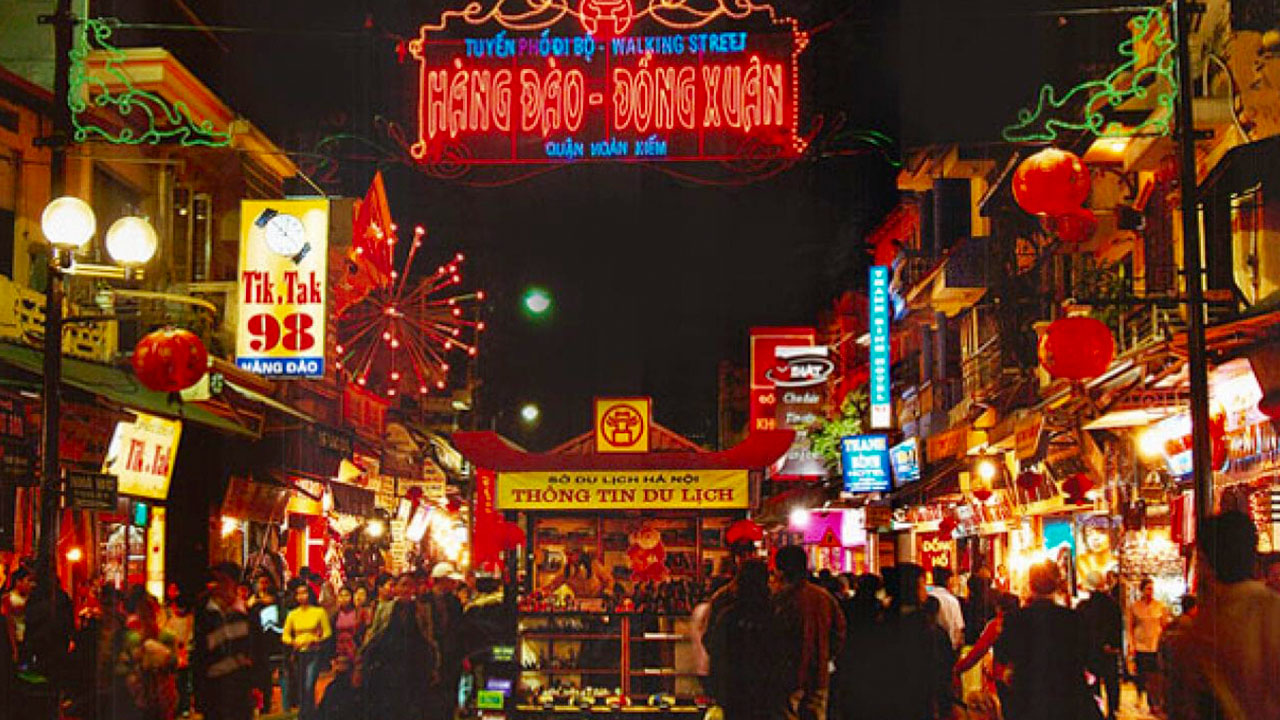
Established as part of Hanoi’s efforts to promote tourism and local commerce, the night market has quickly become one of the city’s most popular attractions. With over 4,000 stalls lining the streets, it offers a diverse range of products, from fashionable clothing and accessories to handicrafts and souvenirs. Moreover, the market is not just about shopping; it’s an experience that includes street performances, cultural shows, and a plethora of food stalls offering local delicacies.
The energy at the Hanoi Weekend Night Market is electric, a vivid contrast to the more laid-back markets like Hang Da and Dong Xuan. The brightly lit stalls create a festive atmosphere, making it an excellent place for socializing and people-watching. The crowd, a mix of locals and tourists, adds to the buzz, with everyone eager to find a good deal or savor some delicious street food. The market serves as a social hub where the community and visitors come together, making it a melting pot of cultures and experiences.
Navigating through the market, you’ll find that it offers something for everyone, much like a well-curated festival. Whether you’re looking for fashion, souvenirs, or just a taste of local culinary delights, the Hanoi Weekend Night Market delivers in spades. The market’s unique blend of commerce and entertainment makes it not just a shopping destination but a cultural experience that captures the essence of Hanoi’s night-time allure.
Buy Tramadol Online Products and activities
The Hanoi Weekend Night Market is celebrated for its wide array of products and engaging activities. Upon entering the market, the first thing that captures your attention is the sheer variety of stylish clothing and fashion accessories. Stalls are piled high with everything from the latest fashions to traditional Vietnamese attire. The range includes casual wear, elegant dresses, and a myriad of accessories like handbags, watches, and jewelry. For fashion enthusiasts, this market is akin to a treasure hunt where each turn could reveal a new, exciting find.

In addition to clothing, the market is a hotspot for handicrafts and souvenirs. From intricately designed pottery to hand-embroidered textiles, each stall showcases the rich artistic heritage of Vietnam. You’ll also find stalls selling traditional Vietnamese conical hats (Non La), lacquerware, and bamboo products, perfect for those looking to bring a piece of Hanoi back home. The souvenirs here are not just keepsakes but pieces of art that reflect Vietnam’s cultural richness.
Food is an integral part of the night market experience. The air is filled with the aroma of street food, tempting visitors to stop and indulge. From savory delights like Banh Mi (Vietnamese sandwiches)and Nem Ran (spring rolls) to sweet treats like Che (Vietnamese sweet soup) and Banh Chuoi (fried banana cake), the array of options is irresistible. Each vendor has their specialty, providing a culinary journey that mirrors the diversity of Vietnam’s cuisine. For those with an adventurous palate, unusual local delicacies such as Bun Dau Mam Tom (noodles with tofu and fermented shrimp paste) await.
In addition to shopping and dining, the Hanoi Weekend Night Market is renowned for its lively entertainment. Street performances are a regular feature, ranging from traditional Vietnamese music and dance to contemporary pop and even breakdancing. These impromptu shows add to the vibrant atmosphere, making the market much more than a shopping destination. It becomes a cultural stage where the city’s artistic talents are put on display, captivating both young and old alike.
Local artisans frequently set up stalls demonstrating their craft, ranging from calligraphy and painting to wood carving and traditional puppetry. This not only offers visitors a chance to purchase handcrafted items but also an opportunity to witness the skill and artistry involved in their creation. The interactive nature of these stalls, where artisans engage with onlookers, provides a deeper understanding and appreciation of Vietnamese craftsmanship.
One of the standout features of the night market is its family-friendly environment. Unlike some bustling global markets that can be overwhelming or chaotic, the Hanoi Weekend Night Market maintains a relaxed yet lively atmosphere. Families stroll through the streets, children in tow, relishing the array of street food, eye-catching trinkets, and captivating performances. It’s a space that encourages community engagement, making it as much an experience for locals as it is for tourists.
https://catschef.com/contact/ Opening hours
The Hanoi Weekend Night Market operates during specific hours that cater to both the local community and the influx of tourists. The market opens its doors every Friday, Saturday, and Sunday evening from 6:00 PM to 11:00 PM. These hours are meticulously designed to take advantage of the cooler evening temperatures and the increase in foot traffic during weekend nights.
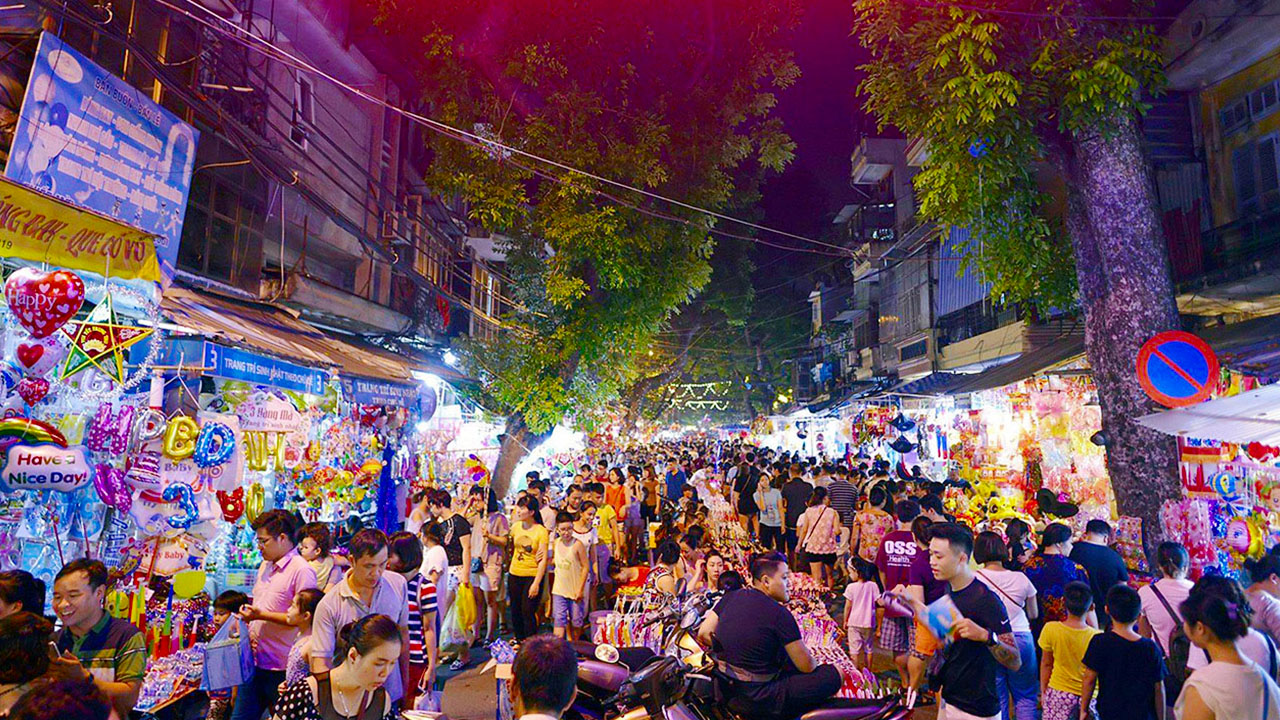
The market begins to come alive at around 5:30 PM, with vendors setting up their stalls and the early evening crowd starting to trickle in. By 6:00 PM, the market is in full swing, glowing under the streetlights and bustling with activity. The early hours are ideal for those who prefer a more relaxed shopping experience, allowing for easier browsing and less crowded aisles.
The peak hours run from around 8:00 PM to 9:30 PM. During this period, the market is at its busiest, packed with locals finishing their day and tourists eager to soak in the vibrant atmosphere. The energy during these hours is palpable, with street performances at their peak and food stalls dishing out their most popular items. For those looking to experience the market at its liveliest, this is the time to visit.
Towards the closing hours, around 10:30 PM, the crowd begins to thin out, and vendors start to wrap up their sales. However, the market retains its charm late into the night, offering a more serene and laid-back ambiance. This is an excellent time for night owls to enjoy a quieter shopping experience or to savor a final round of street food in a more relaxed setting. Keeping the market open till 11:00 PM ensures that even latecomers have ample time to enjoy what it has to offer.
Location and accessibility
The Hanoi Weekend Night Market is strategically located within the pedestrianized streets of Hanoi’s Old Quarter. The market stretches along Hang Ngang, Hang Dao, and Hang Giay streets, extending towards Dong Xuan Market. This central location makes it conveniently accessible from various parts of the city and a must-visit for anyone exploring the Old Quarter.
Accessing the market is straightforward. For those staying near Hoan Kiem Lake, it’s just a short walk to reach the market area. The lake area itself is a popular spot, often thronged with tourists and locals alike, making it a convenient starting point for an evening stroll through the market. This proximity makes the night market an ideal continuation of a leisurely day spent exploring Hanoi’s many historical and cultural sites.
Public transportation options are plentiful. Buses frequently ply routes that pass near the market, and there are numerous bus stops within walking distance. For those preferring the convenience of ride-hailing services, Grab offers a hassle-free option to reach the market from anywhere in the city. The abundance of options ensures that visitors can easily plan their journey, whether they prefer public transport, taxis, or personal vehicles.
For those opting to drive or ride a bike, parking is available, though it may require a bit of a walk. Given the market’s pedestrian-friendly nature, nearby streets are often designated as parking zones. Additionally, several establishments around the market offer parking facilities for a small fee, making it convenient for those who drive. Easy accessibility by various modes of transport makes visiting the night market a hassle-free experience, enhancing its appeal to both locals and tourists.
Hang Be Market
Hang Be Market may not have the grandeur of Dong Xuan or Hang Da Market, but what it lacks in size, it more than makes up for in charm and authenticity. Located in the heart of the Old Quarter, Hang Be Market is one of Hanoi’s oldest traditional markets, with a history that stretches back to the French colonial era. Because of its intimate and somewhat nostalgic atmosphere, it’s a favorite among locals seeking daily essentials and tourists looking for a more authentic Vietnamese market experience.
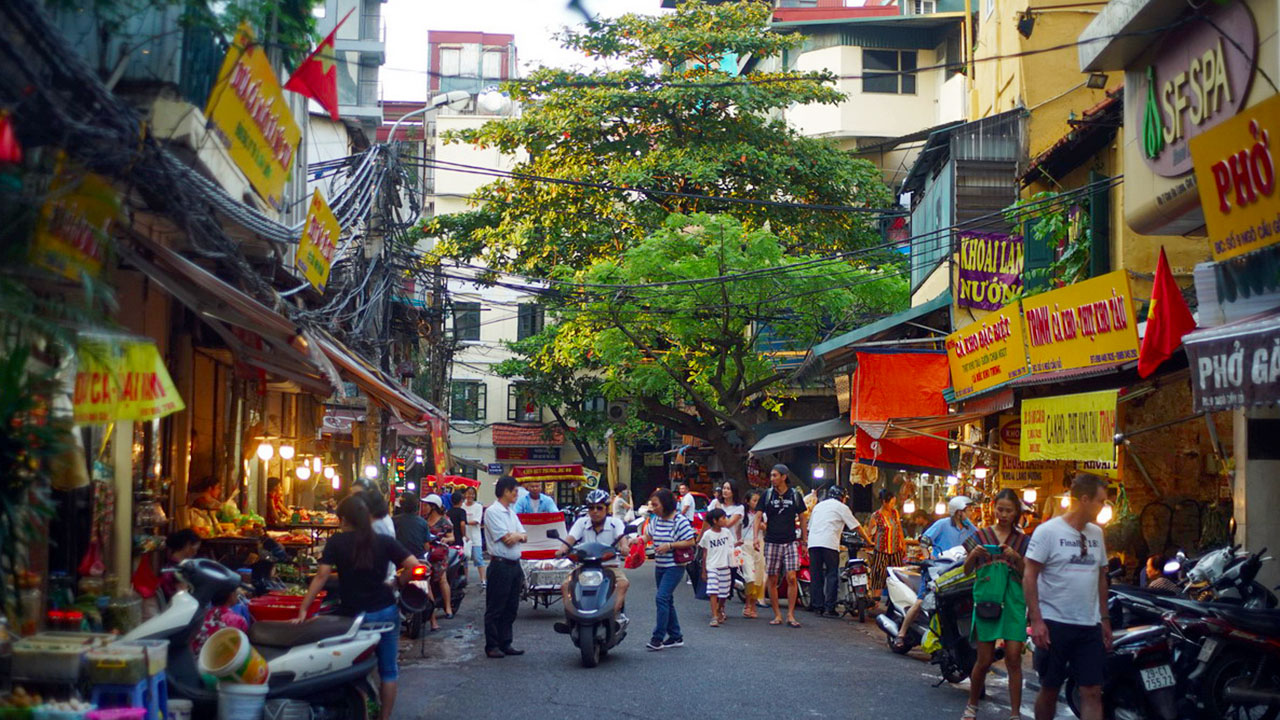
Hang Be Market is an open-air market, which gives it a distinctly different feel compared to its covered counterparts. Stalls spill out onto the street, creating a patchwork of colors, scents, and sounds. The market’s layout is more organic and less regimented, allowing for a more exploratory shopping experience. Each corner turned reveals new vendors, products, and interactions.
Despite its modest size, Hang Be Market offers a wide range of products. The stalls primarily focus on food items, ranging from freshly caught fish and meats to seasonal fruits and vegetables. Unlike the large wholesale atmosphere of Long Bien Market, Hang Be provides a more personal shopping experience where vendors and buyers often engage in friendly banter and negotiations. This close-knit community vibe is one of the market’s biggest selling points.
For those interested in culinary traditions, Hang Be Market serves as a living cookbook of Hanoi’s rich gastronomic culture. The market is an excellent spot to observe how traditional Vietnamese ingredients are sold and prepared. Vendors often display their cooking skills right at their stalls, offering ready-to-eat delicacies that highlight local flavors. This combination of shopping and culinary exploration makes Hang Be Market a uniquely intimate and engaging stop in Hanoi’s bustling Old Quarter.
Products offered
Hang Be Market, though compact, offers an array of products that cater to the everyday needs of Hanoi’s residents while also intriguing curious tourists. Fresh produce dominates the landscape, with vendors meticulously arranging their fruits, vegetables, and herbs. Seasonal fruits, such as lychees in the summer and pomelos in the autumn, are particular crowd-pleasers. The variety and freshness of the produce available make it a go-to place for those who value quality ingredients.
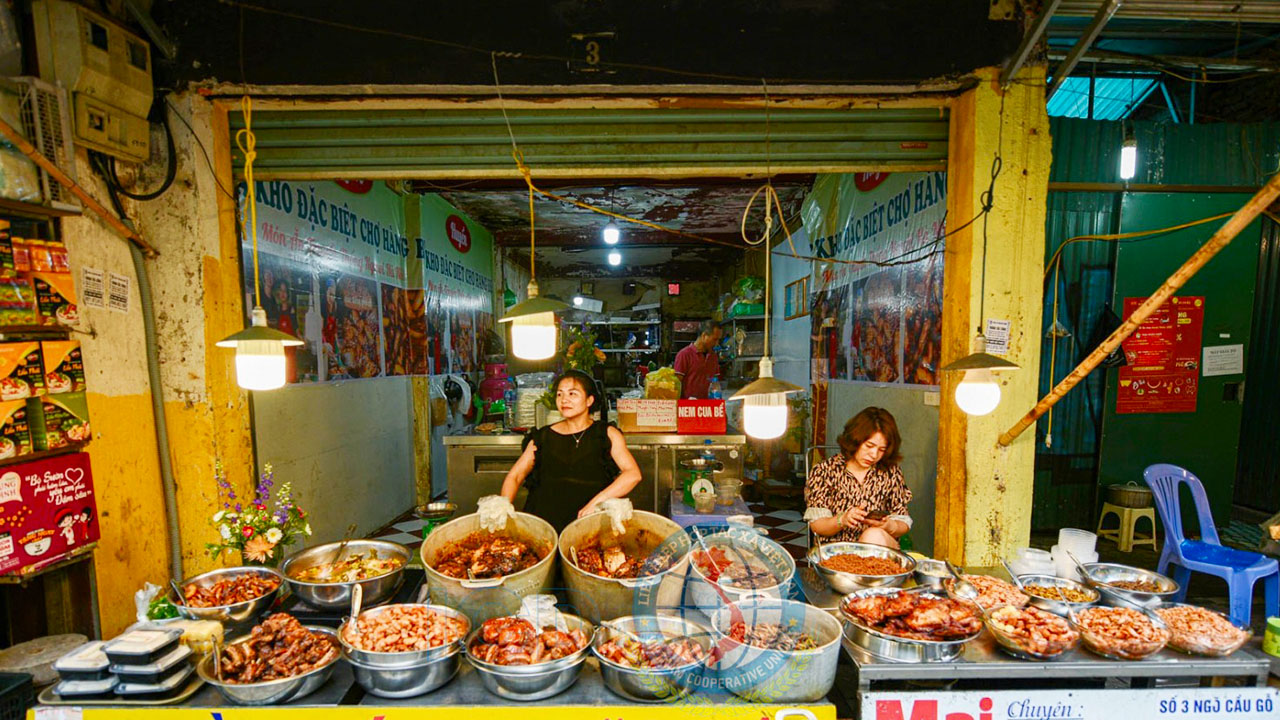
Besides fresh produce, the market is renowned for its seafood and meat sections. Slabs of fresh fish, shrimp, and various other seafood items are displayed on ice, ready for purchase. Meat vendors showcase cuts of pork, beef, and poultry, often sourced from nearby farms. The newness and quality of the meat and seafood are what bring locals back to Hang Be Market day after day. A walk through these sections is not just a sensory delight but also an insightful look into local eating habits and preferences.
Dotted among the stalls are vendors selling dried goods and spices. These sections add a burst of color and aroma to the market. Dried prawns, fish, mushrooms, and other preserved items are popular among locals, often used to create depth of flavor in Vietnamese dishes. The spice stalls, with their overflowing containers of star anise, cinnamon, and dried chili, create an olfactory feast that leaves a lasting impression on visitors.
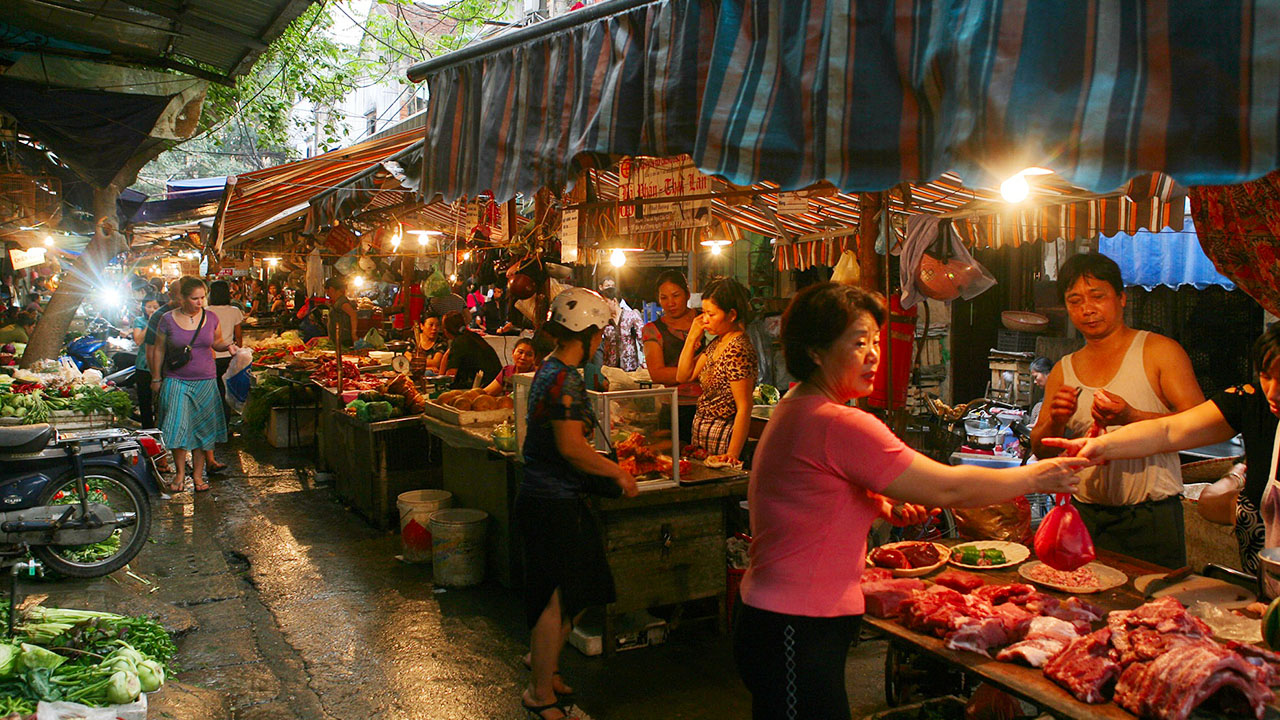
One of the standout elements of Hang Be Market is its street food. Numerous vendors offer ready-to-eat dishes that showcase the best of Hanoi’s street food culture. From steaming bowls of pho to crispy banh xeo (Vietnamese pancakes), the market provides a culinary repertoire that needs to be tasted to be believed. The food is not only delicious but also represents the essence of Vietnamese cuisine: fresh, flavorful, and deeply rooted in tradition.
In addition to food items, Hang Be Market also features stalls selling household essentials. From kitchen utensils and cleaning supplies to small electronics and everyday wear, these items ensure that the market remains a comprehensive shopping destination for locals. This well-rounded mix of products underscores the market’s role as an essential part of community life in the Old Quarter.
Opening hours
Hang Be Market operates with a slightly unconventional schedule that suits both the early birds and those who prefer to shop later in the day. Open daily from 5:00 AM to 5:00 PM, the market starts its day at dawn, coinciding with the arrival of fresh produce, meat, and seafood. This early start caters primarily to locals who aim to complete their shopping before their workday begins.

The market sees its peak activity in the early morning hours. By 6:00 AM, Hang Be Market is already buzzing with life – vendors hawking their fresh catches, early risers picking up ingredients for the day’s meals, and the air filled with the sounds of lively bargaining. The early hours are particularly popular for fresh produce and seafood, ensuring the best pick of the day is snapped up quickly.
As the morning progresses, the market remains active but more geared towards prepared foods and household supplies. By late morning and early afternoon, the market sees a mix of shoppers, including tourists exploring the Old Quarter and locals purchasing last-minute items. Around 1:00 PM to 3:00 PM, the activity somewhat tapers off, giving the market a quieter, more relaxed ambiance, making it an ideal time for those who prefer a less crowded experience.
Closing time is around 5:00 PM, with the last wave of shoppers picking up dinner ingredients or grabbing a quick street food snack. By this time, vendors start wrapping up their goods and preparing to call it a day. Knowing these operational hours helps visitors plan their trip effectively to maximize their experience at Hang Be Market, whether for fresh produce, street food, or a cultural exploration.
Atmosphere and experience
The atmosphere at Hang Be Market is a vital part of its charm, exuding an authenticity that larger markets sometimes lack. From the moment you step into its bustling aisles, you are immersed in a microcosm of Hanoi life. The narrow pathways, crowded with vendors and shoppers, create an intimate and energetic environment. The lack of a rigid layout gives Hang Be Market a maze-like quality, inviting exploration and discovery at every turn.
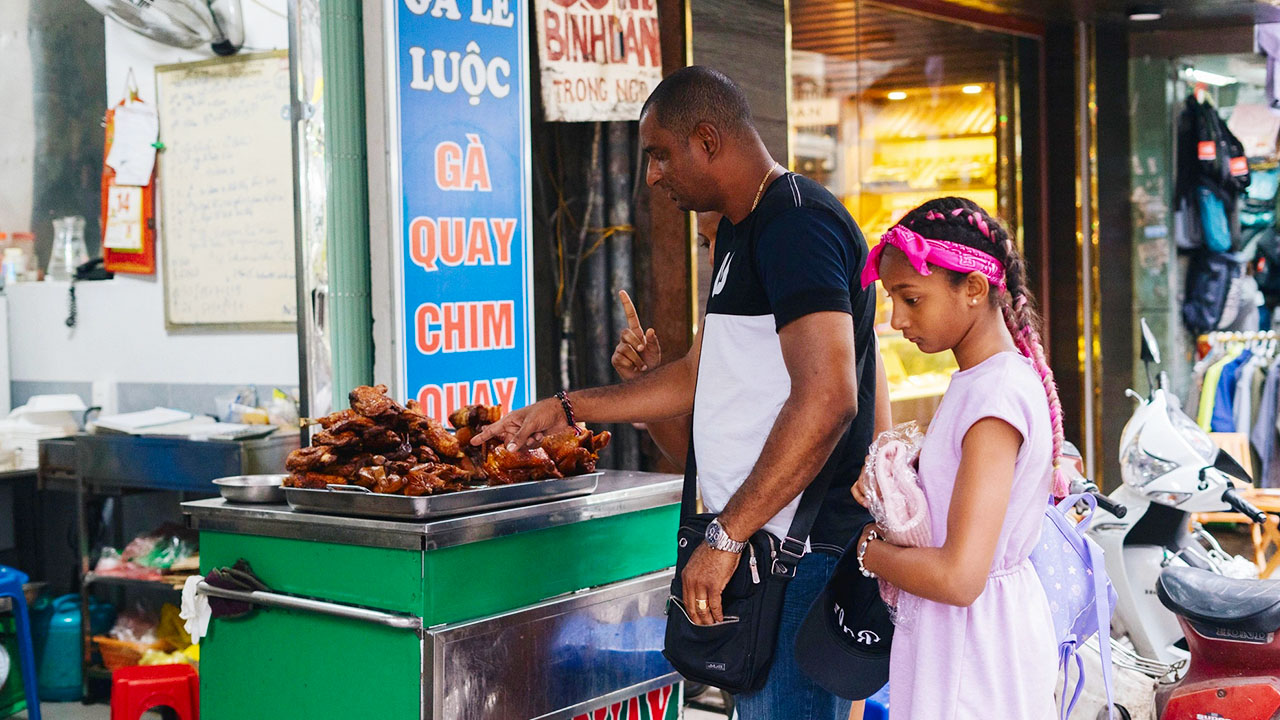
One of the notable aspects of Hang Be Market is the interactive and friendly nature of the vendors. Unlike the more commercialized markets, here, the vendors often take the time to chat, offer samples, and engage in friendly banter. This sense of community interaction enhances the overall experience, making each shopping trip a personal and memorable encounter. For tourists, these interactions offer a deeper insight into local customs and traditions.
The sensory experience at Hang Be Market is unparalleled. The vibrant colors of the fresh produce, the aromatic spices, and the sizzling sound of street food create a multi-sensory environment that is both overwhelming and exciting. The market is not just a place to shop; it’s a feast for the senses, providing an immersive experience that combines visual appeal, enticing aromas, and the lively sounds of a traditional market setting.
Another unique aspect of Hang Be Market is its deeply rooted traditions. Many of the stalls are family-run businesses that have been handed down through generations. This continuity adds a layer of historical significance to the market, making it a living testament to Hanoi’s enduring commercial traditions. Shoppers can sense this history in the way vendors operate, often using age-old techniques and maintaining long-standing relationships with their customers.
The overall experience of visiting Hang Be Market is like stepping into a vibrant painting of everyday Vietnamese life. It’s not just about the products on sale but the context in which they are sold. The market offers a snapshot of Hanoi’s community spirit, culinary traditions, and commercial resilience. For anyone looking to understand the heart of Hanoi, Hang Be Market provides an authentic glimpse into the city’s soul.
Long Bien Wholesale Market
Located at the foot of the historic Long Bien Bridge, the Long Bien Wholesale Market is unlike any other market in Hanoi. Operating predominantly during the night, it is the city’s largest wholesale market for fresh produce, and its atmosphere is a bustling blend of commerce and chaos. This market has been a cornerstone of Hanoi’s commercial landscape for over 20 years, playing a crucial role in the supply chain that sustains the city.
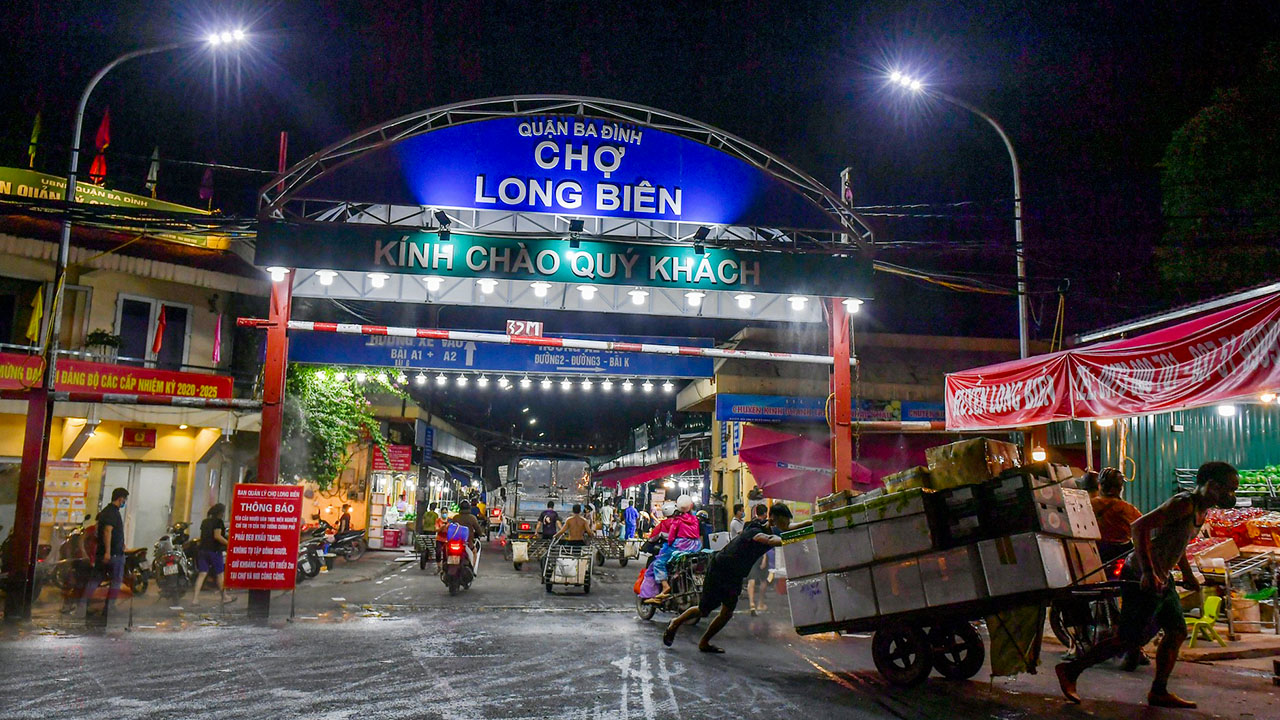
What sets Long Bien Wholesale Market apart is its nocturnal nature. The market comes alive in the wee hours of the morning, with activities peaking between 2:00 AM and 4:00 AM. During this time, a seemingly endless stream of trucks and vendors floods the market, transporting fresh produce from various provinces in the Red River Delta region and beyond. The market’s early hours and high-energy environment provide a unique cultural and commercial experience often unseen by the average tourist.
The market is a labyrinthine expanse, densely packed with stalls overflowing with fruits and vegetables. Despite the apparent chaos, there is a method to the madness, with sections dedicated to different types of produce. The market is not just a trading hub but also a vital cog in the agricultural economy of northern Vietnam. Its function as a wholesale market means that it serves as the primary supplier for many of Hanoi’s smaller markets and grocery stores.
For visitors, Long Bien Wholesale Market offers a unique and unfiltered glimpse into the working life of Hanoi. The dynamic environment, bustling activity, and vibrant colors create a captivating experience. While the market primarily caters to locals and restaurant owners, tourists are welcome to witness this nocturnal spectacle. The sheer scale and scope of the market highlight the importance of agricultural commerce in Vietnam’s economy and provide a fascinating look at the logistical operations involved in supplying a bustling city.
Products offered
The core of Long Bien Wholesale Market lies in its extensive range of fresh produce. Stalls are brimming with a kaleidoscope of fruits and vegetables, many sourced from the fertile lands of the Red River Delta and further afield. Seasonal fruits such as mangoes, watermelons, plums, and lychees are some of the crowd favorites. The sight of piles of bright yellow mangoes or the vibrant green of freshly picked vegetables is a feast for the eyes, exemplifying the richness of Vietnam’s agricultural bounty.

In addition to fruits and vegetables, the market also offers a variety of other agricultural products. Fresh herbs and spices, indispensable to Vietnamese cuisine, are available in abundance. The aromatic scents of basil, coriander, and mint fill the air, providing a sensory delight. The meticulous arrangement of these herbs, alongside displays of vivid red chilies and golden turmeric, transforms the market into a living palette of colors and smells.
The produce sold here is characterized by its affordability and freshness. Because Long Bien is a wholesale market, prices are significantly lower compared to retail outlets. However, this doesn’t mean that quality is compromised. Visitors can expect to find top-grade fruits and vegetables, often at prices that seem too good to be true. For those interested in purchasing in bulk, this market offers an excellent opportunity to secure the freshest goods at the most competitive rates.

Beyond fruits and vegetables, Long Bien Wholesale Market also features sections dedicated to other essential goods. Stalls selling meats, eggs, and other raw food items are prevalent. Vendors skillfully display cuts of pork, chicken, and beef, alongside crates of fresh eggs. Though not as extensive as the produce sections, these areas are critical for supplying Hanoi’s restaurants and smaller markets with essential ingredients.
The vendors themselves often add a personal touch to the experience. Many have long-standing relationships with their clients, built on years of trust and consistent quality. Engaging with these vendors offers insights into their lives and the intricate supply chains that bring fresh produce from the farm to the market. This human element adds warmth and authenticity to the chaotic but captivating environment of Long Bien Wholesale Market.
Opening hours
Unlike the more conventional markets in Hanoi, Long Bien Wholesale Market operates during the late-night and early-morning hours, making it a true nocturnal marvel. The market kicks into high gear around 2:00 AM, when the first influx of trucks from various provinces arrive, laden with fresh produce. By 3:00 AM, the market is a hive of activity, with vendors unloading their goods and setting up their stalls. This period represents the peak trading hours, where the hustle and bustle are at their zenith.
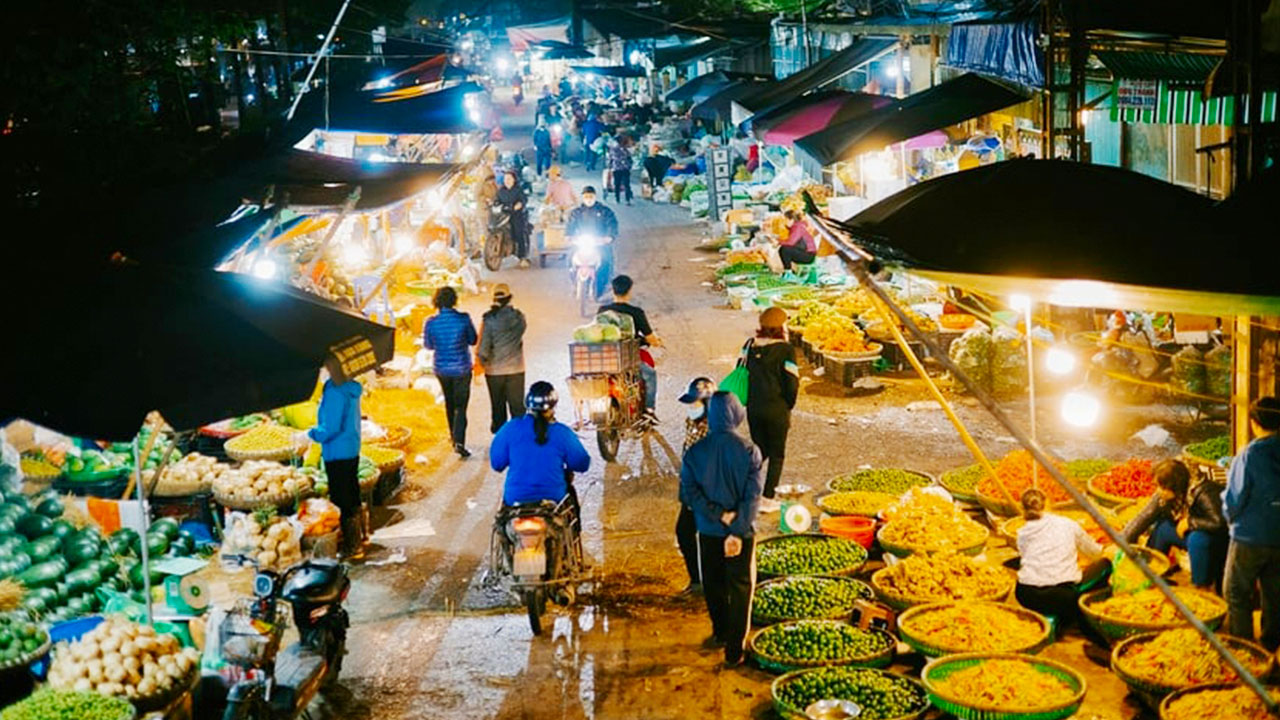
Activity continues at a frenzied pace until around 5:00 AM, after which the intensity begins to wane slightly as the bulk of the wholesale deals are finalized. For those wanting to experience the market at its liveliest, these early hours offer a unique glimpse into the behind-the-scenes operations of Hanoi’s food supply chain. The market remains open until mid-morning, catering to latecomers and smaller vendors looking to make their final purchases for the day.
By 8:00 AM, the market begins to quiet down, transitioning from its peak trading atmosphere to a more subdued environment. During these hours, the market may focus on clearing out the remnants of the morning’s trade, offering discounted prices to ensure that leftover produce gets sold. This quieter time provides an alternative experience, allowing visitors to explore the market at a more relaxed pace.
Understanding the opening hours is crucial for anyone planning a visit to Long Bien Wholesale Market. Early risers and night owls will find the market’s unique schedule fascinating, as it offers a window into a world that operates while the rest of the city sleeps. The excitement and activity during the peak hours make it an unforgettable experience, showcasing the sheer scale and efficiency of Hanoi’s agricultural trade.
Location and accessibility
Long Bien Wholesale Market is strategically located in the Long Bien District, near the iconic Long Bien Bridge. This location not only provides a scenic backdrop but also offers convenient access for those traveling from various parts of Hanoi. The market’s position at the foot of this historic bridge makes it a notable landmark, easy to locate for first-time visitors.
Traveling to Long Bien Wholesale Market is relatively straightforward. For those staying in the Old Quarter, it’s a short taxi or motorbike ride away, typically taking less than 15 minutes, depending on the traffic. The proximity to other key areas of Hanoi makes it an ideal destination for a late-night or early-morning adventure without requiring extensive travel time.
Public transportation options are also available for visitors looking to experience the market. Several bus routes pass near the Long Bien Bridge, making it accessible for those relying on public transit. For a more personalized experience, ride-hailing services like Grab offer a convenient and cost-effective way to reach the market at any time of the night or early morning.
For the more adventurous, renting a motorbike is another popular option. This mode of transport allows visitors to explore the market and its surrounding areas at their own pace. Ample parking facilities are available near the market, accommodating the influx of trucks, motorbikes, and other vehicles throughout the night. The well-connected roads and multiple access points ensure a smooth journey for anyone heading to Long Bien Wholesale Market.
Shopping Tips for Visitors
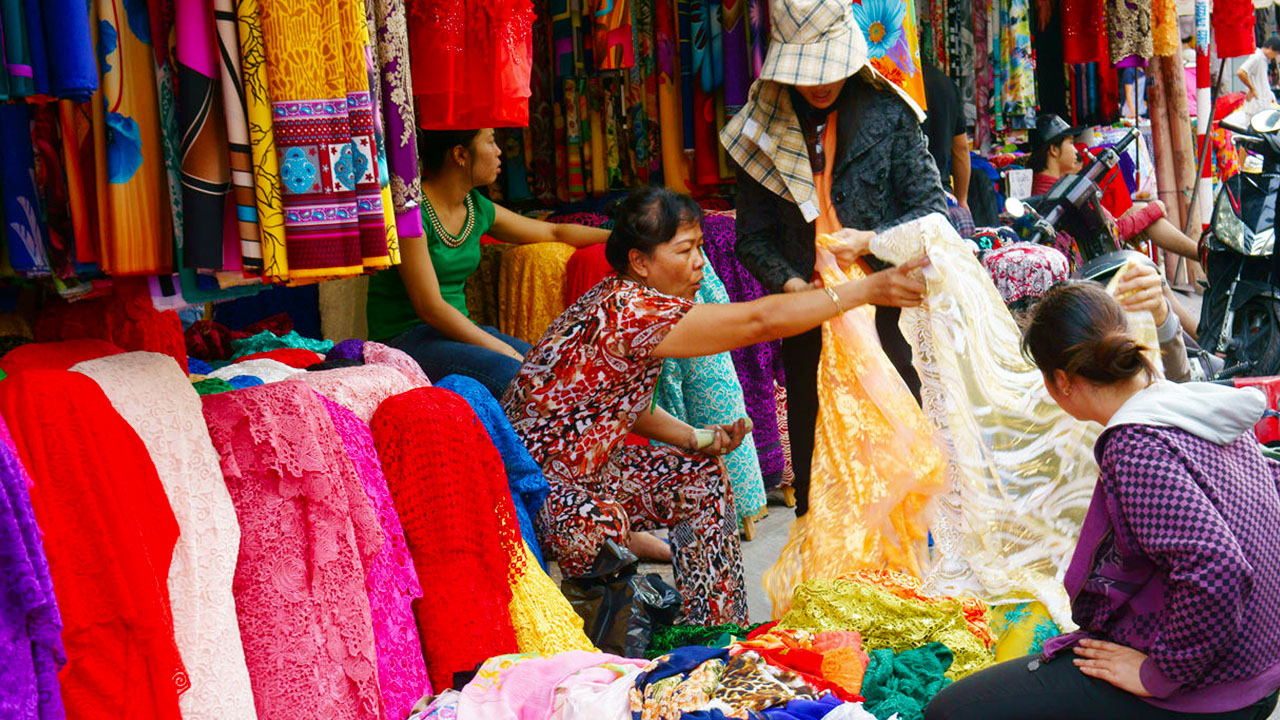
Shopping in Hanoi’s Old Quarter can be a fun and rewarding experience, but it’s essential to keep a few tips in mind to make the most of your time and money. Whether you’re browsing the stalls at Dong Xuan Market or haggling for souvenirs at the Hanoi Weekend Night Market, these shopping tips will help you navigate the bustling markets like a pro.
Negotiating Prices
One of the essential skills for shopping in Hanoi’s markets is the art of negotiation. Here are some tips for bargaining effectively:
- Start Low: When negotiating a price, start with a low offer that is below what you’re willing to pay. This gives you room to move up during the bargaining process.
- Be Polite: Bargaining is a common practice in Vietnam, but it’s essential to remain polite and friendly during negotiations. A smile and a respectful attitude can go a long way.
- Know When to Walk Away: If you can’t reach a price that you’re comfortable with, don’t be afraid to walk away. Often, the vendor will call you back and agree to a lower price rather than lose the sale.
- Buy in Bulk: If you’re purchasing multiple items from the same vendor, you may be able to negotiate a better price. Ask if they offer discounts for buying in bulk.
What to Buy
When shopping in Hanoi’s markets, you’ll find a wide range of products to choose from. Here are some popular items to consider:
- Clothing and Textiles: From traditional ao dai dresses to modern streetwear, Hanoi offers a diverse selection of clothing and textiles. Look for high-quality silk products, embroidered fabrics, and custom-made garments.
- Handicrafts and Artwork: Vietnamese artisans are known for their skill and craftsmanship, producing beautiful lacquerware, ceramics, wood carvings, and more. These make excellent souvenirs or gifts.
- Local Foods and Ingredients: Don’t miss the chance to sample and purchase local foods and ingredients, such as coffee, tea, spices, sauces, and snacks. These culinary delights capture the essence of Vietnamese cuisine.
- Souvenirs and Trinkets: Whether you’re looking for keychains, magnets, or traditional handicrafts, Hanoi’s markets offer a plethora of souvenir options to commemorate your visit.
Local Specialties
Hanoi’s markets are renowned for their unique specialties and regional products. Here are some local favorites to keep an eye out for:
- Vietnamese Coffee: Known for its strong flavor and smooth texture, Vietnamese coffee is a must-try for caffeine enthusiasts. Pick up some locally roasted beans or pre-packaged coffee to enjoy at home.
- Silk Products: Hanoi is famous for its silk production, with many shops offering silk garments, scarves, and accessories. Look for high-quality silk products in a range of colors and styles.
- Water Puppet Souvenirs: Water puppetry is a traditional art form in Vietnam, and miniature water puppets make charming souvenirs. These handcrafted wooden figures are a unique memento of Vietnamese culture.
- Non La (Conical Hat): The iconic conical hat, known as non la, is a symbol of Vietnamese tradition and style. Pick up one of these handmade hats as a practical and fashionable souvenir.
By following these shopping tips and keeping an eye out for local specialties, you can make the most of your shopping experience in Hanoi’s Old Quarter. Whether you’re hunting for unique souvenirs, sampling local delicacies, or simply soaking in the vibrant atmosphere of the markets, shopping in Hanoi is sure to be a highlight of your visit.
Conclusion
Exploring the markets of Hanoi’s Old Quarter is a sensory adventure that immerses you in the vibrant culture and rich history of the city. From the bustling aisles of Dong Xuan Market to the specialized stalls of Hang Be Market, each market offers a unique glimpse into the daily life and traditions of Hanoi’s residents.
Whether you’re shopping for fresh produce, hunting for souvenirs, or simply soaking in the sights and sounds of the market, Hanoi’s Old Quarter markets have something for everyone. With a bit of bargaining savvy, a spirit of adventure, and a healthy appetite for local cuisine, you can make the most of your market experience in this dynamic city.
So, lace up your walking shoes, sharpen your bargaining skills, and get ready to dive into the colorful tapestry of Hanoi’s markets. The treasures you’ll find and the memories you’ll make are sure to last a lifetime. Happy shopping!


